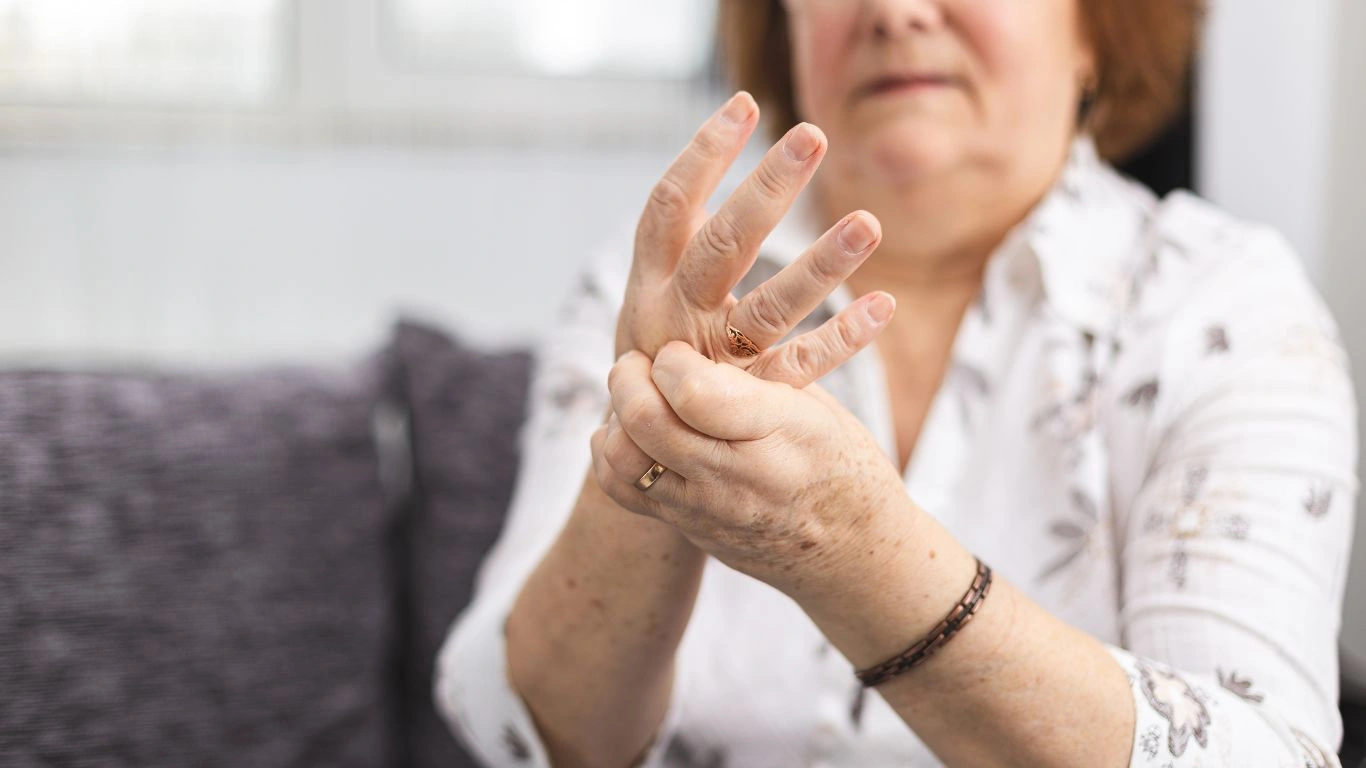Rheumatoid Arthritis: Effective Strategies for Joint Preservation
As a Rheumatology Nurse Practitioner, I’ve seen firsthand how devastating rheumatoid arthritis (RA) can be for patients. It’s not just a disease that affects the joints—it impacts people’s lives in a way that goes beyond physical discomfort. But there’s one crucial aspect of RA management that’s often overlooked: joint preservation. The importance of joint preservation in RA cannot be overstated. I’ve worked closely with countless patients to help them understand that it’s not just about treating the symptoms, but also about taking proactive steps to protect and preserve joint function for the long term. In this article, we’ll explore the significance of joint preservation for RA patients, focusing on both the medical and practical approaches that make a real difference in day-to-day life.
Understanding Rheumatoid Arthritis and Its Impact on Joint Health

Rheumatoid arthritis is an autoimmune condition where the body’s immune system mistakenly attacks the synovium—the lining of the joints. This leads to inflammation, pain, and swelling, and over time can cause permanent damage to the affected joints. RA typically impacts joints symmetrically, meaning it often affects both sides of the body, which is a hallmark of the condition.
Unlike osteoarthritis, which is caused by wear and tear over time, RA is driven by an immune system gone awry. That means it doesn’t just damage cartilage and bone—it also impacts the soft tissues, which can be just as damaging. The long-term effects of uncontrolled RA can include joint deformities, loss of mobility, and in some cases, complete joint destruction. That’s why joint preservation is such an important focus in managing this disease.
The Importance of Early Diagnosis and Treatment in Joint Preservation
One of the most significant factors in preserving joint health for those with RA is early diagnosis and intervention. When the disease is caught early, it’s much easier to control inflammation and prevent irreversible damage. As I’ve seen with many of my patients, early intervention can be a game-changer.
In the past, the approach to treating RA was largely focused on managing flare-ups. However, over the past few decades, the treatment landscape has evolved. The introduction of disease-modifying anti-rheumatic drugs (DMARDs) has revolutionized how we manage RA. These medications don’t just treat symptoms; they can slow the progression of the disease, preserving joint integrity and function over time.
But it’s not just about medications. Lifestyle changes, physical therapy, and even surgical options play an essential role in joint preservation. We’ll explore all of these options in more detail, but the core idea is clear: the earlier you start treating rheumatoid arthritis, the better your chances of preserving your joints.
Managing Inflammation to Preserve Joint Function

At the heart of rheumatoid arthritis lies inflammation. Chronic inflammation is what leads to the damage and destruction of joints. This is why controlling inflammation is key to preventing long-term joint damage. Unfortunately, inflammation is often underestimated or mismanaged. Some patients only address it when symptoms flare, but managing inflammation should be a daily focus for those with RA.
Pharmacologic Strategies: Targeting Inflammation Effectively
For many RA patients, pharmacologic treatment is the cornerstone of managing inflammation. Nonsteroidal anti-inflammatory drugs (NSAIDs) can help control pain and reduce swelling during flare-ups, but they don’t address the underlying disease mechanism. This is where DMARDs come in. Traditional DMARDs like methotrexate are widely used to control RA. Newer biologic DMARDs, which target specific molecules involved in inflammation, have offered more precise and effective options for many patients.
Biologics, like tumor necrosis factor inhibitors (TNFi), interleukin inhibitors, and JAK inhibitors, work by targeting the proteins that drive inflammation at the molecular level. These treatments are game-changers for many patients, slowing disease progression and preventing joint damage. Of course, every patient is different, and treatment must be tailored to individual needs. But overall, controlling inflammation is the key to preserving joint function and quality of life.
Non-Pharmacologic Approaches: Taking Control of Your Health
While medication is essential, it’s not the only tool in our arsenal when it comes to joint preservation. I always encourage my patients to consider non-pharmacologic strategies as part of their treatment plan. Simple lifestyle changes, such as a balanced diet, regular exercise, and weight management, can go a long way in reducing inflammation and supporting joint health.
- Diet: A diet rich in anti-inflammatory foods like omega-3 fatty acids, fruits, and vegetables can help reduce systemic inflammation. Avoiding processed foods, refined sugars, and trans fats is also important.
- Exercise: Low-impact exercises such as swimming, walking, or cycling are ideal for RA patients. These activities help maintain joint flexibility, strengthen muscles around the joints, and improve overall mobility.
- Weight management: Carrying excess weight places more stress on the joints, especially weight-bearing joints like the hips and knees. Maintaining a healthy weight can help alleviate this pressure and prevent further damage.
Physical Therapy and Occupational Therapy: Enhancing Joint Function

Physical therapy (PT) and occupational therapy (OT) are incredibly valuable tools in preserving joint health and maintaining function for those with RA. PT focuses on exercises to improve strength, flexibility, and range of motion. For example, strengthening the muscles around the knee joint can help protect it from damage, especially in RA patients where the joint is inflamed.
On the other hand, OT helps patients adapt to daily tasks and conserve energy, especially during flare-ups. An OT might recommend using assistive devices like grab bars or ergonomic tools to reduce joint strain. They might also guide how to modify daily activities to reduce the impact on affected joints. Together, PT and OT can significantly improve a patient’s quality of life while preserving their joint function.
Joint Preservation Techniques: Surgical and Non-Surgical Options

While non-surgical options can be very effective in managing rheumatoid arthritis, there are times when surgery becomes a necessary step in preserving joint function. It’s not something that we always want to consider, but in some cases, joint replacement or other surgical interventions are key to providing relief and maintaining mobility. However, it’s important to remember that surgery isn’t the first line of defense—it’s usually considered when other treatments are no longer sufficient to control symptoms or prevent further damage.
When Surgery Becomes Necessary
In my experience, surgery is typically recommended when RA has caused significant joint damage that can’t be reversed through medication or physical therapy alone. Common surgeries for RA patients include joint replacement, tendon repair, and synovectomy (removal of inflamed tissue in the joint). The decision to pursue surgery depends on the extent of the joint damage, the patient’s overall health, and their functional goals.
Joint replacement surgery, particularly of the hip or knee, can be a life-changing procedure for RA patients. It’s designed to replace a severely damaged joint with an artificial one, allowing the patient to regain mobility and reduce pain. While the recovery process can take time, it’s often worth it for patients who have reached a point where their joint damage significantly impairs their daily life. For example, I’ve seen many patients who were previously unable to walk or use their hands for basic tasks, but after joint replacement surgery, they’ve regained function and found a renewed sense of independence.
Other surgical interventions, like synovectomy, are often used in the early stages of joint damage, before replacement surgery becomes necessary. These procedures aim to remove the inflamed tissue in the joint, potentially reducing pain and swelling. However, they aren’t as definitive as a full joint replacement and are usually less commonly performed.
Exploring Non-Surgical Options to Support Joint Health
On the other hand, many patients with rheumatoid arthritis can avoid surgery by using non-surgical methods to manage their condition and preserve their joints. One of the most effective ways to prevent joint damage is by maintaining a proper balance of activity and rest. It might sound simple, but knowing when to rest and when to push through can be key to avoiding long-term wear and tear.
Another valuable non-surgical approach is the use of assistive devices and orthotics. Things like braces, splints, and custom orthotic insoles can help offload pressure from joints, particularly in the hands, knees, and feet. I often recommend these devices to patients who are starting to experience pain and inflammation in their joints but haven’t yet reached the point where surgery is necessary. These devices don’t cure the disease, but they help prevent further damage and improve daily function, especially for those with significant mobility challenges.
The Role of Diet and Supplements in Joint Preservation

When it comes to joint preservation, one of the most underestimated factors is diet. As a rheumatology nurse practitioner, I’ve seen how lifestyle changes, especially around nutrition, can drastically impact disease progression and overall joint health. There’s no “magic food” that can reverse rheumatoid arthritis, but a well-balanced, anti-inflammatory diet can make a significant difference in how patients feel and in reducing the risk of further joint damage.
Anti-Inflammatory Foods: What to Eat for Joint Health
The goal of an anti-inflammatory diet is to reduce the body’s overall inflammation. Certain foods can naturally help in this process, while others may exacerbate inflammation. I always tell my patients that making small changes in their diet can lead to noticeable improvements in both pain and inflammation levels. So, what should you be eating? Let’s break it down:
- Omega-3 Fatty Acids: These healthy fats, found in fatty fish like salmon, sardines, and mackerel, can help decrease the inflammation associated with RA. They work by blocking inflammatory molecules, providing a natural way to reduce flare-ups.
- Fruits and Vegetables: A colorful plate of fruits and vegetables, particularly leafy greens, berries, and cruciferous vegetables (like broccoli and cauliflower), is key to providing antioxidants that fight inflammation.
- Whole Grains: Unlike refined grains, whole grains like quinoa, brown rice, and oats have anti-inflammatory properties and provide the body with essential nutrients.
- Spices and Herbs: Certain spices, such as turmeric and ginger, contain compounds that have anti-inflammatory effects. They can be easily added to meals for flavor and health benefits.
In addition to incorporating these anti-inflammatory foods, it’s also important to avoid foods that can trigger inflammation. Processed foods, refined sugars, and trans fats are all known to promote inflammatory responses. Patients with RA should consider reducing or eliminating these from their diets to help protect their joints from further wear and tear.
Supplements That May Help Preserve Joint Health
Along with diet, supplements can play a supportive role in joint preservation. While they shouldn’t replace medications or lifestyle changes, certain supplements have shown promise in reducing inflammation and supporting joint health. One of the most common supplements I recommend to my patients is glucosamine and chondroitin. These two substances are naturally found in the cartilage and may help in slowing cartilage breakdown, though the research is mixed. Still, many patients find them helpful in managing their RA symptoms.
Another supplement that has gained attention in the rheumatoid arthritis community is omega-3 fish oil. As mentioned earlier, omega-3 fatty acids have potent anti-inflammatory properties and may help with joint pain and stiffness. I often recommend a high-quality fish oil supplement to my patients who have difficulty getting enough omega-3s through their diet.
Curcumin, the active compound in turmeric, is another supplement that can help reduce inflammation. I’ve seen some patients experience significant relief from symptoms by incorporating curcumin into their daily regimen. However, as with all supplements, it’s important to discuss them with your doctor or healthcare provider before starting, especially since they can interact with other medications.
Innovative Therapies for Joint Preservation in Rheumatoid Arthritis

As we continue to learn more about rheumatoid arthritis, new treatments and therapies are constantly emerging. These innovative therapies are aimed at better controlling inflammation, preventing joint damage, and ultimately preserving the function of the joints affected by RA. As a Rheumatology Nurse Practitioner, I’ve had the privilege of witnessing the evolution of these treatments over the years. They not only provide more options for patients but also offer more hope for long-term joint preservation.
Biologic Therapy: A Revolution in RA Treatment
One of the most significant advances in the management of rheumatoid arthritis is the advent of biologic therapies. These treatments target specific molecules in the immune system that drive inflammation. Unlike traditional DMARDs, which have a more generalized effect on the immune system, biologics are designed to be much more targeted. They block the activity of certain proteins, like tumor necrosis factor (TNF), interleukins, and B cells, that contribute to the inflammatory process in RA.
Biologics have drastically changed how we manage rheumatoid arthritis. As I’ve seen in practice, they are especially beneficial for patients who haven’t responded to traditional therapies. With biologics, we’re able to stop the progression of joint damage much earlier in the disease process, which is crucial for long-term joint preservation. However, biologics can be expensive, and they are not without risks. It’s important to have an open discussion with your healthcare provider to determine if biologic therapy is the right choice for you.
There are various types of biologics on the market today, each targeting different inflammatory pathways. Some of the most commonly used biologics include TNF inhibitors like etanercept and adalimumab, interleukin inhibitors like tocilizumab, and JAK inhibitors like tofacitinib. I always stress to my patients that biologics are not a “cure” for RA, but they can offer significant symptom relief and slow disease progression, especially when combined with other treatment strategies like physical therapy and joint protection techniques.
Emerging Therapies: Looking Toward the Future
Alongside biologics, other emerging therapies are on the horizon. One such therapy is Janus kinase (JAK) inhibitors. These oral medications are designed to block specific enzymes that contribute to inflammation and joint destruction. JAK inhibitors are proving to be effective alternatives for patients who can’t tolerate biologics or who don’t respond to them. Additionally, there are ongoing studies exploring the potential of stem cell therapy, which could provide regenerative benefits for joint tissues damaged by RA. While this research is still in its early stages, it’s an exciting development to watch.
Another innovative therapy being explored is the use of gene therapy to treat rheumatoid arthritis. The concept behind gene therapy is to modify or repair the genes involved in the inflammatory process. While we’re still far from seeing gene therapy as a standard treatment for RA, the promise of reducing or even reversing the immune dysfunction at the genetic level holds a lot of potential for the future.
Emotional and Mental Health: The Unsung Component of Joint Preservation

Rheumatoid arthritis is not just a physical disease; it’s a mental and emotional challenge too. As someone who has worked with RA patients for many years, I’ve seen the toll it takes on people’s mental health. The constant pain, the uncertainty of flare-ups, and the potential for disability can lead to feelings of frustration, sadness, and even depression. And yet, mental health is often the most overlooked aspect of RA care. It’s crucial to remember that joint preservation goes beyond just physical health—it’s about maintaining a positive outlook and mental resilience too.
The Impact of RA on Mental Health
Living with a chronic illness like rheumatoid arthritis can be mentally taxing. It’s easy to become discouraged when the pain seems relentless, and joint function starts to decline. As a healthcare provider, I often encourage my patients to seek support through therapy or counseling to help them cope with the emotional burden of RA. Having someone to talk to who understands the psychological effects of chronic pain can make a world of difference in managing the stress and anxiety that can accompany the disease.
Additionally, I recommend incorporating relaxation techniques such as deep breathing exercises, meditation, or mindfulness into your daily routine. These practices can help reduce stress and improve emotional well-being. In my experience, patients who actively manage their mental health tend to have better outcomes in their physical health too. There’s a clear connection between mental and physical well-being, and addressing both can help improve overall quality of life.
Building a Support System for RA Management
Support is another key factor in preserving joint health, both physically and emotionally. I always tell my patients that they don’t have to go through rheumatoid arthritis alone. Whether it’s family, friends, support groups, or a healthcare team, having a solid support system in place can make the journey with RA more manageable. Support groups, both online and in-person, can be a great way to connect with others who understand the challenges of living with RA. Sharing experiences and learning from others can offer invaluable insights and encouragement.
Moreover, keeping a positive relationship with your healthcare team is vital. Open communication with your rheumatologist, nurse practitioner, and other healthcare professionals can ensure that your treatment plan is on track and adjusted as needed. I always encourage patients to be active participants in their care. When you’re informed and involved in the decision-making process, it can reduce feelings of helplessness and give you a greater sense of control over your health.
References
Disclaimer: The information provided in this article is for informational purposes only and is not intended as medical advice. Always consult with your healthcare provider before making any changes to your treatment plan. Individual treatment options may vary based on your specific condition and medical history.

Tarra Nugroho is a dedicated Nurse Practitioner with a strong foundation in family and preventive care. She brings both compassion and clinical expertise to her practice, focusing on patient-centered care and health education. As a contributor to Healthusias.com, Tarra translates medical knowledge into clear, empowering articles on topics like women’s health, chronic disease management, and lifestyle medicine. Her mission is simple: help people feel seen, heard, and informed—both in the clinic and through the content she creates. When she’s not caring for patients, Tarra enjoys weekend hikes, plant-based cooking, and curling up with a good health podcast.






